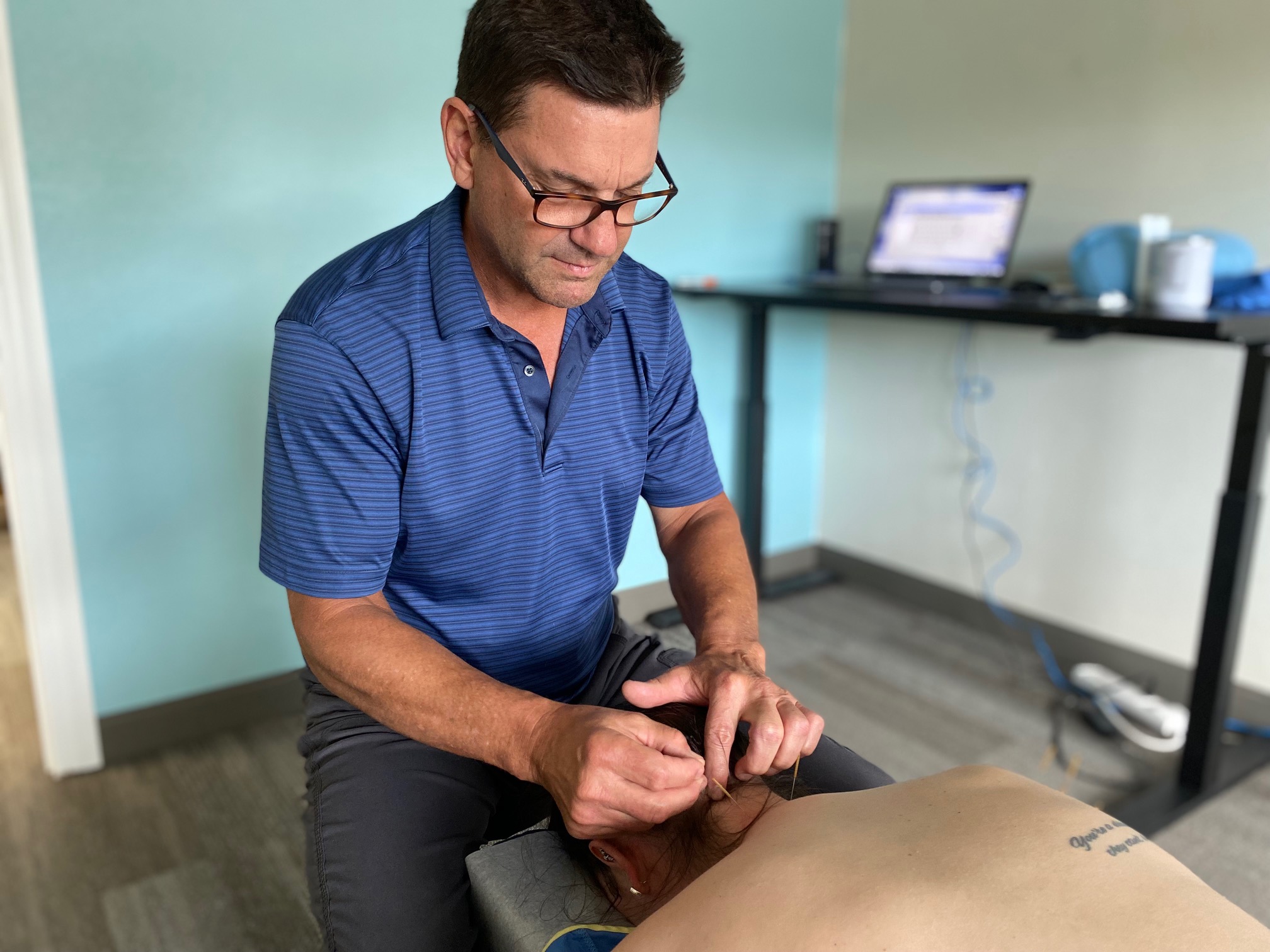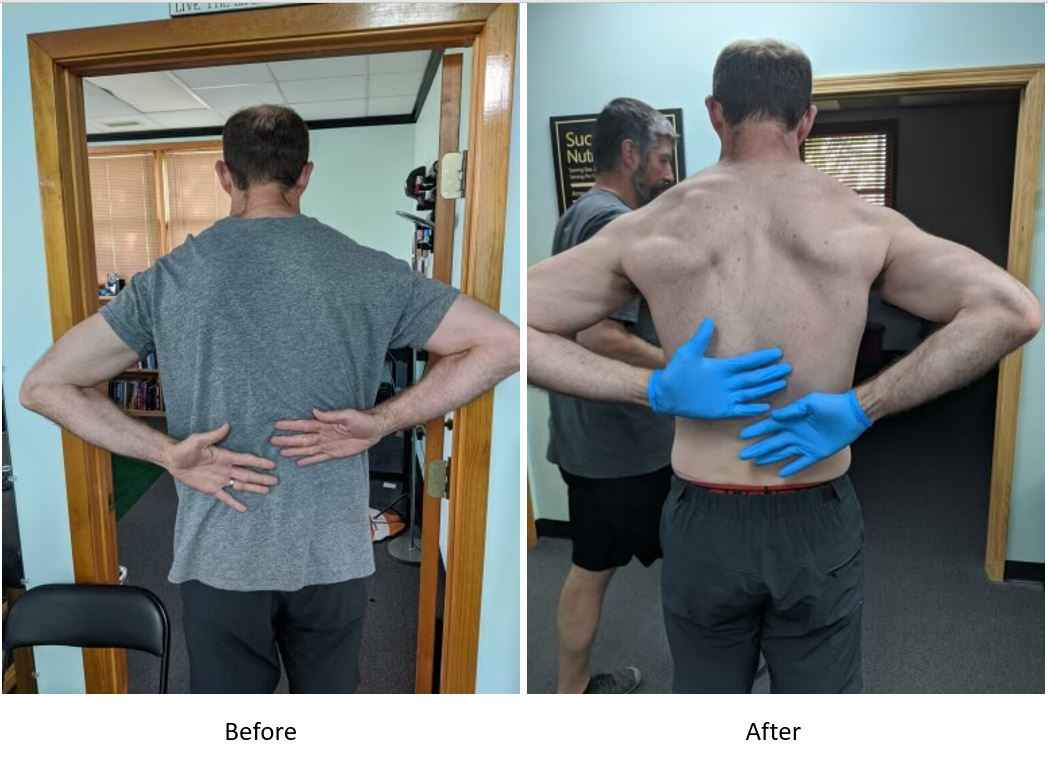Services
Dry Needling
Dry needling is a highly effective treatment to improve range of motion, alleviate pain, relieve tension, and calm muscle spasms. It is different from acupuncture in that it focuses on the musculoskeletal and neuromuscular systems vs. acupuncture which focuses on internal organ dysfunction or the balance of acupuncture meridians. Doctors LoConte, Welch and Riley are all certified in Dry Needling and see tremendous results in patients who are struggling with pain and full range of motion.
8 Dry Needling Sessions for $350
Each session is a 15 minutes. Call to claim this special package today: (775) 829-8686.
What is Dry Needling?
Dry needling has been a proven treatment technique for muscle, tendon, and connective tissue pain since the 1940s. Pioneered by Dr. Janet Travell, M.D., who served as President John F. Kennedy’s personal physician, she discovered that dry needling was just as effective as “wet” needling when it came to pain relief. “Dry” refers to an insertion of a solid needle with no “wet” solution at all. “Wet” needling involves hollow-core hypodermic needles that inject a fluid, such as a local anesthetic or saline solution.
It is safe and an effective technique for patients with certain musculoskeletal issues or pain. The technique uses extremely fine, solid, stainless steel filiform needles that vary in length. The size needle selected for treatment depends on the depth of the tissue being treated. The needle is inserted into the body at a trigger point on a muscle, which causes it to contract and then relax.
How Does The Treatment Work?
Dry Needling creates a sharp sensation at the point of insertion that then travels on a specific pathway from the point of stimulation to the brain. This flow of energy reduces muscle fiber pain and soft tissue pain in many patients. In addition, easing the trigger points may improve flexibility and increase range of motion. That’s why this method is often used to treat sports injuries, muscle pain, and also fibromyalgia pain.
What Conditions Can Dry Needling Help?
Dry Needling has proven effective in alleviating conditions like spinal pain, tennis elbow, plantar fasciitis, Achilles tendinitis, and other tendon pain and inflammation. Additionally, this treatment can ease muscle spasms and muscle tenderness and tightness. It can also help relieve pain following an accident or sports injury because it accelerates the body’s natural healing process. It can also be used as a nonsurgical intervention for conditions like chronic knee and hip pain. Overall, it has been shown that musculoskeletal function is restored much more quickly when dry needling is incorporated into the treatment plan. Generally, patients can expect to see positive results from dry needling after 2 to 4 sessions.
Some of the common conditions treated are:
- Back pain, neck pain, knee pain, shoulder pain, hip pain, myofascial pain
- Headaches and migraines
- Range of motion issues
- Fibromyalgia
- Plantar Fasciitis
- Carpal Tunnel Syndrome
- Sciatica
- Tendonitis
- Golfer’s Elbow


The Results: Before and After
Dr. Welch had limited internal rotation in the left shoulder from a partial rotator cuff tear. After only two sessions of dry needling, the mobility was better on the left shoulder than the right.

Patient Testimonial: Dry Needling & Muscle Scraping Relieves Migraines
Dry needling, and Graston muscle scraping are very effective therapies on their own, but for patient, Karissa Block, combining these two therapies at Northern Nevada Chiropractic has been extremely helpful in preventing and relieving migraines.
How is Dry Needling Different from Acupuncture?
Acupuncture is designed to relieve pain and discomfort, or internal issues by opening up a person’s energy flow or chi. Dry Needling is designed to stimulate trigger points, or activate muscles.
In contrast to traditional acupuncture, dry needling is based on our modern knowledge of musculoskeletal and neurological anatomy, disease and injury, and evidenced-based research. Unlike acupuncture, dry needling targets trigger points, which are hypersensitive spots in the fascia of the musculoskeletal system. When the doctor examines a patient, they feel for trigger points that are like nodules or knots in the muscle. Large muscles may contain clusters of trigger points.
While dry needling is different from traditional acupuncture, it does use similar needles and techniques. Additionally, the trigger points of dry needling often overlap with acupuncture points as these are closely related to nerves and motor points in muscles.
Patient Testimonials
Watch what our patients have to say about the service and healing they received at the hands of our Northern Nevada Chiropractic doctors.

